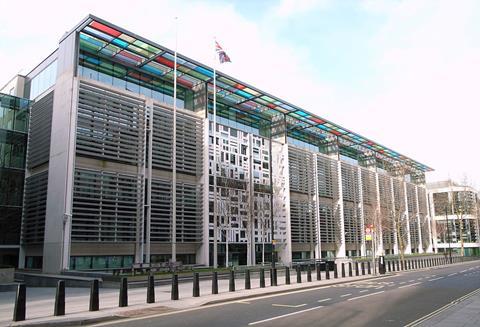Policy launched by former chancellor George Osborne in 2015 achieves just 38% of its aim
A government programme designed to see surplus public land sold to provide new homes has fallen 100,000 houses short of its target, according to an official assessment.
A summary report of the 2015-20 Public Land for Housing Programme set up by former chancellor George Osborne in the wake of David Cameron’s 2015 election victory, found that it had got just 38% of the way towards reaching its target of providing 161,000 plots from government departments.

In the November 2015 Spending Review, Osborne had secured promises from departments including the Ministry of Defence, Department for Transport, the then Department for Communities and Local Government and the Department of Health, to sell land worth £4.54bn on which could be built 161,000 homes.
However, the summary published today found that by March 2020 just 616 sites with capacity for 61,302 homes had been released by government departments – almost 100,000 plots short of the target.
The 2015-20 programme was a continuation of a 2011-15 programme instituted by the coalition government, which had seen 109,000 plots released by departments for housing. Overall, the summary said, just 60,000 homes have so far actually been built on land disposed of under both the 2011-15 and 2015-20 programmes.
Launching the proposals in 2015, Osborne had said they were part of a plan aimed at “accelerating housing supply”.
The summary said land capable of producing a further 5,708 homes had been transferred to Homes England by the cut-off date for the programme, but had not been sold for development, so did not count as having been delivered.
The summary said it was already clear by 2017 that much of the land originally committed to the programme was not going to come forward. It said this was due either to land being “no longer available for development for housing by the target deadline, for example because it had been repurposed to meet other needs such as schools” or because it had been “delayed due to issues such as changing operational requirements, planning, re-provision constraints or environmental concerns”.
The figures show big disparities in the performance of different departments in releasing public land. Homes England, which managed the role for the DCLG – now the Department for Levelling Up, Housing and Communities (DLUHC) – came close to meeting its 36,000-plot target, with land for 31,292 plots released. The MoD, however, disposed of land for just 5,388 plots – less than 10% of its 55,000 plots target.
The news comes after the revelation that one of the other flagship housing programmes from the Cameron and Osborne years, the 200,000-home starter home scheme, was wound up without a single starter home being built.
A government spokesperson declined to explain further the failure to meet the targets in the Public Land for Housing Prgoramme but said the government was working across departments to support the release of public land for homes. The spokesperson said: “Some sites put forward for this programme are in the process of being transferred or remediated so that development can take place.
“The government is also investing £300 million to unlock smaller, public brownfield sites for new homes through our One Public Estate programme.”
Last week the government announced a new cross-government property atrategy, which tasks public bodies with looking at how public sector land is managed and released so it can be put to better use. It covers home building, improving the environment, contributing to net zero goals and economic growth, but does not include specific targets for housebuilding.










No comments yet